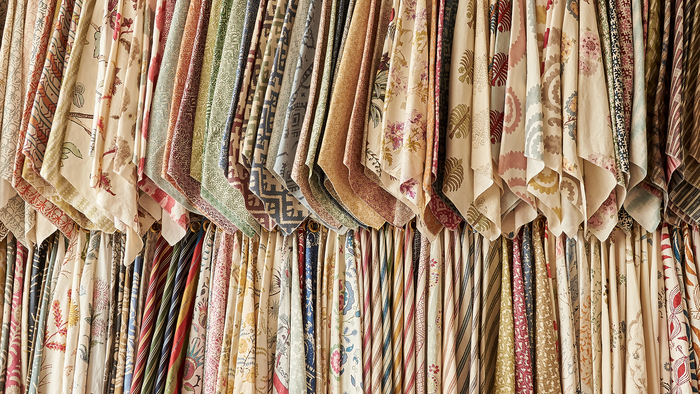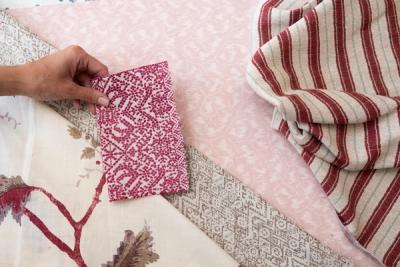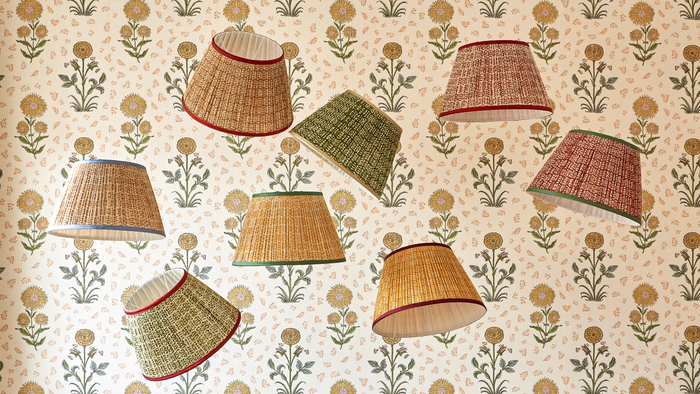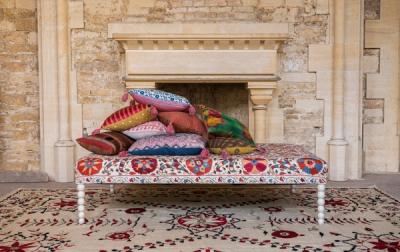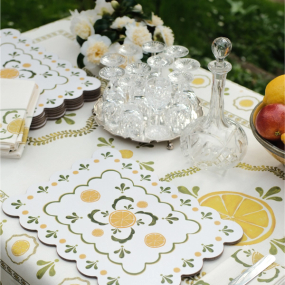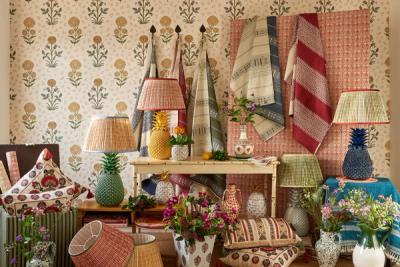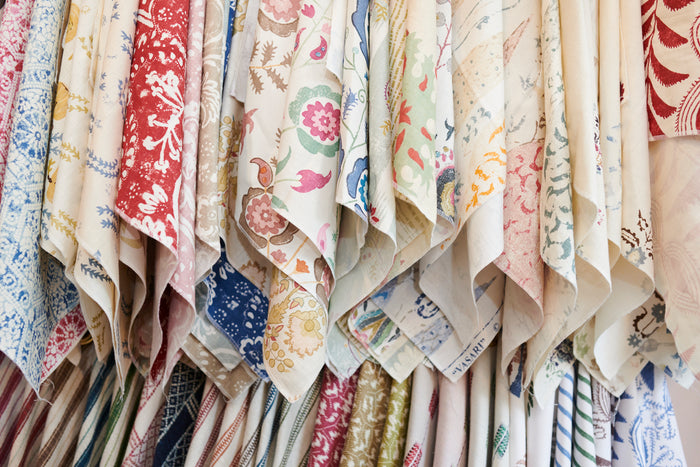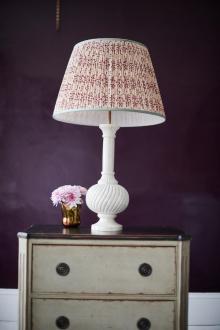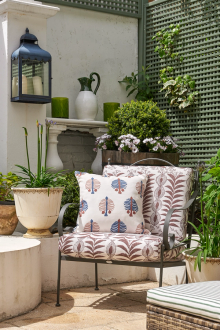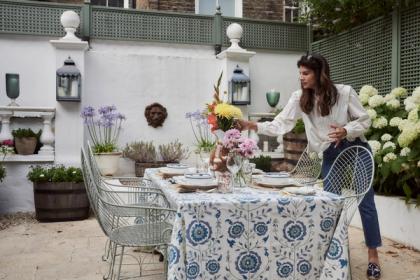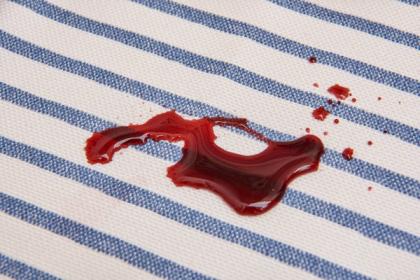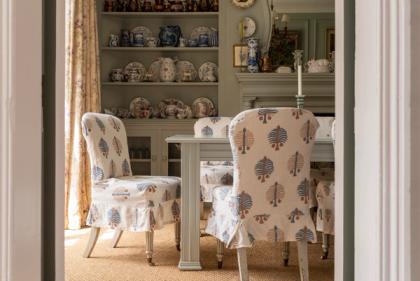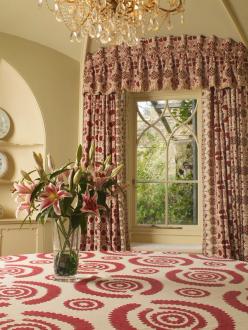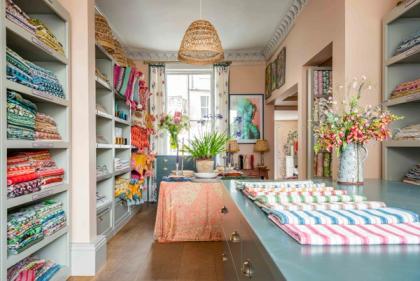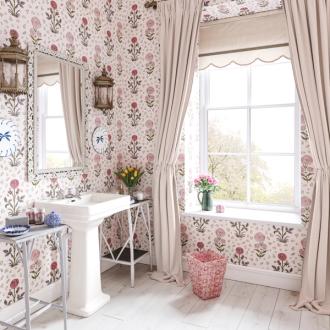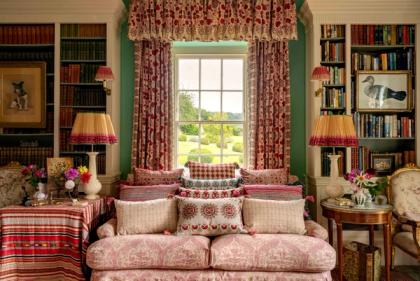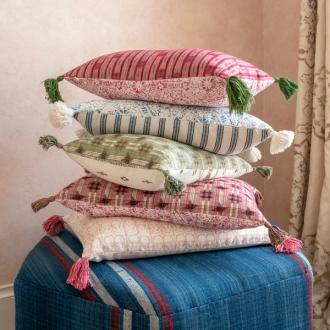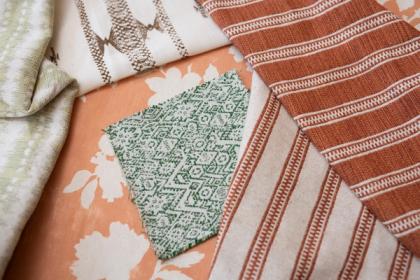The Penny Morrison Guide to Linen
Linen is the unrivalled staple of the British home and, for many of us, it is tied to the feeling of dressing coolly in summer, withdrawing deep into the warmth of bed in winter. For soft furnishings, when choosing upholstery fabric, curtains and bedding, few textiles pose strong rivals to linen.
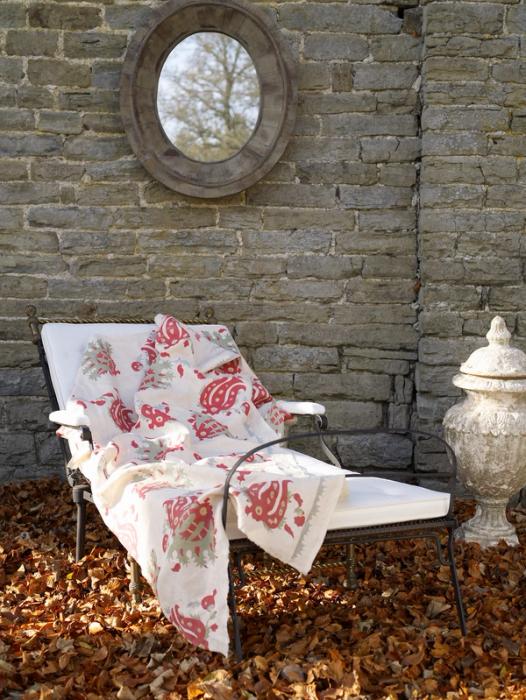
The Penny Morrison Guide to Linen
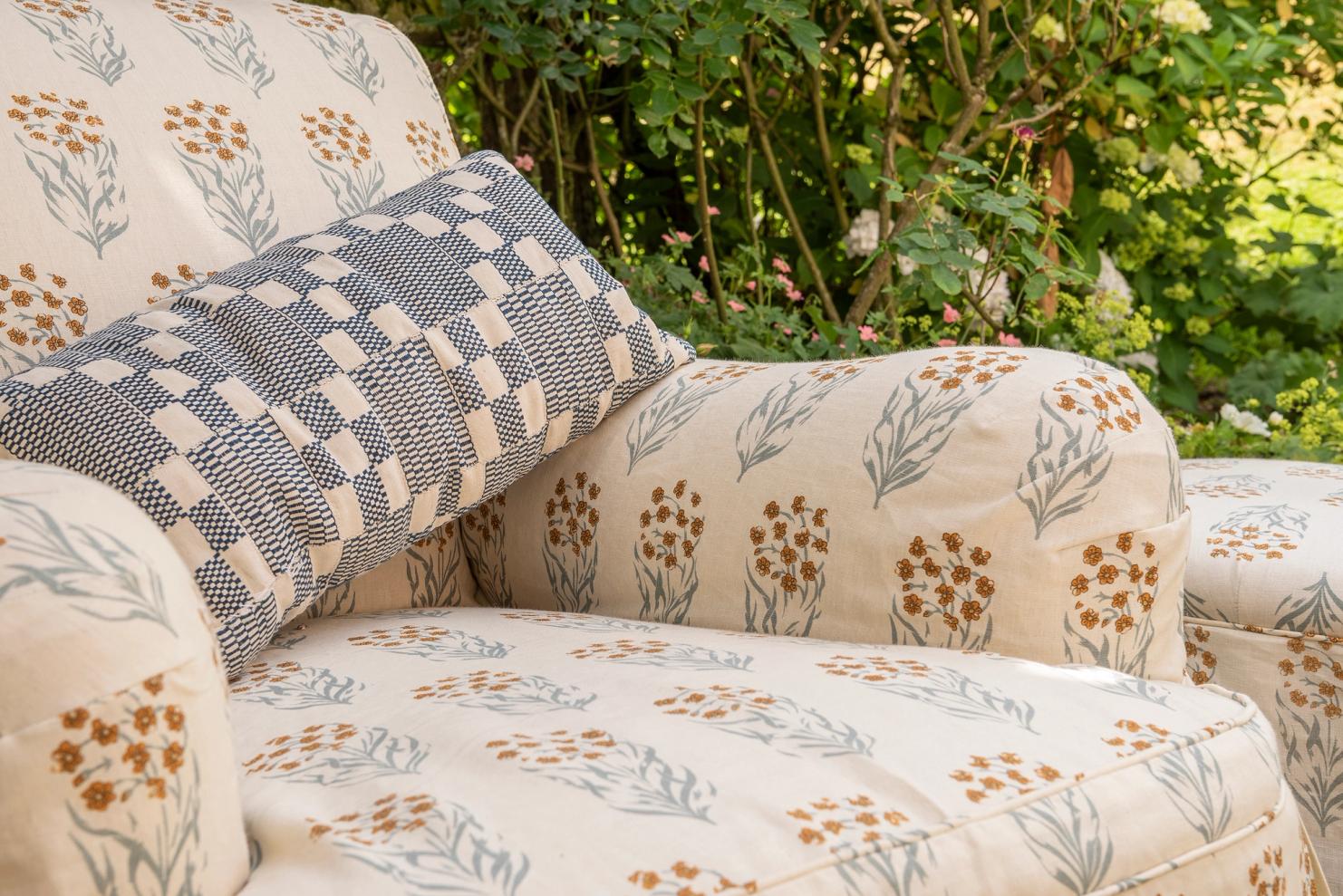
Clean bedding on the line, the sensation of a cool seat on sun-hot skin, the curtains catching the breeze through the open window, the feeling of sinking willingly into deeply layered bedding or drawing.
Linen is the unrivalled staple of the British home and, for many of us, it is tied to the feeling of dressing coolly in summer, withdrawing deep into the warmth of bed in winter. For soft furnishings, when choosing upholstery fabric, curtains and bedding, few textiles pose strong rivals to linen.
Our linen fabrics are woven, dyed, and printed according to our philosophy of slow production, and our appreciation of timelessness and quality. The collections offer the perfect array of choices for the home, and exemplify the value linen continues to offer all of us, even thousands of years into its production…
What is Linen?
Linen is a textile woven from the fibres of the flax plant, linum usitatissimum, which was first cultivated in a part of the world known now as the Fertile Crescent, a middle eastern region that played a pivotal role in early agriculture.
Flax is a highly valued crop. It produces oil (sometimes referred to as flaxseed oil, but also ‘linseed oil’), which offers a rich, plant-based source of omega-3. This oil is, of course, also a simple wood finish (also known by the name linseed oil). Flax seeds are considered a superfood, and a staple in many diets. They can be ground down to a fine flour, perfect for gluten free breads, cakes, and pancakes.
The plants fibres are, however, the most valued part of the plant. These fibres are long and, compared with other plant fibres, particularly strong. Woven together, they create a hardwearing and versatile textile that has helped shape the world of textiles for an incredibly long time.
A Whistle-Stop History of Linen
There is nothing brief about linen’s history – being one of the first textiles ever woven and worn by humans in so many different parts of the world. The ancient Egyptians wore white linen for its ability to keep the body cool in the scorching African sun, while the ancient Greeks enjoyed a thriving textile industry centred on the cultivation of flax, and the production of linen.
Throughout ancient Mesopotamia, as well as parts of the world known to us as modern-day Israel, Syria, Jordan – in India, across the Mediterranean, and Europe – linen was a common sight, and a prized commodity. It represents one of the first goods to be carried along early trade routes and passed from community to community across the world.
This continued throughout the middle-ages, and, eventually, the flax plant was cultivated in England. Over the decades and centuries, it found many uses in clothing, bedding, upholstering, footwear, book binding, and in the art world, stretched over canvas frames.
Today, linen remains a highly valued textile around the world, for the same reasons it was popular within ancient civilizations and flourishing new worlds.
Linen’s Qualities
Linen is easily recognisable, not just by appearance, but by texture and the scent of crisp, fresh laundry that it carries within its fibres. Its lasting popularity is the result of a long list of innate properties offered by the flax from which it has been woven…
As we mentioned above, flax produces long, durable fibres, and a well-woven piece of linen will be more than capable of lasting for many, many years without showing signs of wear and tear. With frequent use, linen will start to feel softer to the touch – but, for obvious reasons, this change is treated as a benefit. As the crisp texture of a new linen sofa gives way to suppleness, for instance, it’s as though the piece is relaxing into the home and creating that little island of calm and comfort.
It is widely known that linen clothing is ideal for keeping wearers cool in the summer and warm in the winder, and the same can be said for pieces upholstered in the textile, or linen bedding and other fabrics about the home.
Unlike many synthetic fabrics, linen reacts to the temperatures it is exposed to. Cool weather causes the weave to contract and tighten, while heat has the opposite effect, creating more space between the individual fibres and allowing the fabric – and your skin – to breathe.
For furniture, this creates a more comfortable sensation against the skin. For curtains, closed during the hottest hours of a summer day, it creates shade without the stifling feeling of a room without air.
Being the product of a completely natural fibre, pure linen poses a low risk of allergic reactions or skin sensitivities. Anyone intolerant or sensitive to the chemicals used in synthetic fabrics is likely to find greater comfort in linen, which is one of the reasons why it makes such a popular choice for the perfectly layered bed.
Fabrics designed to be used in upholstery, or around the home and garden, need to undergo a Martindale test, which was designed to identify a fabric’s ability to withstand wear and tear without showing any significant signs of age or damage.
Linen’s natural strength means that it performs well in Martindale tests and offers a strong choice for furnishing the family home.
Most natural textiles like linen, cotton and wool are ideal for holding dye, and being sold in a variety of beautiful colours and prints. This is one of the things that makes linen such a versatile choice for the home – the ability to add flourishes throughout every room, no matter the colour theme or style.
One of linen’s most recognisable characteristics is the organic way that it will drape over the body, a bed or chair, or from the curtain rod. The slightly crinkled, unfussy shape it naturally takes on is perfect for creating a welcoming, sink-into-it lounge or a bed that looks as cosy as it does beautiful.
For some people, linen’s tendency to wrinkle can appear to be a disadvantage but embracing the shapes this textile naturally falls into is the key to achieving that middle ground between design and comfort.
Upholsterers cut and sew linen to fit the furniture perfectly, which means you will avoid a ‘wrinkly armchair’ but, when the fabric is left to its own devices – as it is when used as bedding – it will achieve that characteristic drape.
Creating linen is a slow process, but it is not complicated by any requirements for harsh chemicals or long supply chains with big carbon footprints. Flax is grown widely and without devastating surrounding environments, and its fibres are woven into bolts of fabric at a slower pace (and a on smaller scale) than many synthetic alternatives.
At Penny Morrison, we have always centred our approach around a commitment to slow, careful, and considerate work over speed and an uncompromising approach to growing our range. Linen is the perfect fit for us, not just because of its versatility and long-term value, but for how it suits a more measured approach to interior design.
Fabrics that tend to get stretched and pulled out of shape are, for obvious reasons, less-than-ideal choices for the home – or, for that matter, for clothing. Linen’s lack of elasticity, and the way in which the fibres are woven together, mean that it is capable of retaining its shape far better than some alternatives.
Particularly in the world of athleticwear, synthetic fabrics are so often sold on the basis of their moisture-wicking properties, but originals of the textile world – and particularly linen – are by far the best choices for absorbing excess moisture, like sweat or humidity in the air.
This is one of the reasons linen makes for such an effective curtain fabric. In older homes – and especially where the original windows are still intact – a little extra moisture around the glass is normal. A fabric that can withstand this, rather than letting mould grow easily in the folds, will prove to be the most effective investment of your time and money.
The Various Types of Linen
There are a few different ways to weave flax fibres together and create linen fabric, and all create quite different results with their own properties and uses.
Plain Weave Linen
When the fibres are plain woven together, they are woven relatively loosely. Sometimes, this loose weave is designed to maximise the linen’s absorbency for use in the kitchen (hence why plain weave linen is occasionally referred to as ‘glass towelling’) but, other times, this loose weave is used for items that need to be softer, such as handkerchiefs.
The looser weave creates a very attractive, relaxed textile, excellent for the warmer months.
Damask Linen
Damask linen is woven using a combination of techniques. Part plain weave, part satin weave, the result is a little tighter and smoother than plain weave linen. Damask linen is often plain, since the unique weave creates its own subtle pattern within the fabric, but it can feature a pattern.
Loose Weave Linen
As you can no doubt tell from the name, loose weave linen features more space between the fibres. This type of linen tends to be far more absorbent, although it can be a little more fragile to work with.
Towelling Linen
As you can probably tell from the name, towelling linen is a term used to refer only to linen made for use in towels, hand-cloths, and washcloths. They are very good at absorbing water and, being as breathable as they are, tend to be better at avoiding the damp, musty smell some synthetic towels can be quick to acquire.
Frequently Asked Questions
Everything else you needed to know about linen, answered below.
Is it Better to Wash or Dry Clean Linen?
Linen ought to be dry cleaned. While one of its greatest strengths is its durability, ensuring that your linen looks like new for the many, many years it is capable of seeing you through is a job best left to the professional dry cleaner, rather than the washing machine.
Its breathability means that it is unlikely to require washing as often as synthetic alternatives, since odours are far less likely to be trapped within its natural fibres.
You can read our full guide to caring for fabrics around the home, including linen, here.
Should You Iron Linen?
Some linen can be ironed, but it is a tricky process and, generally, we would recommend that you simply embrace linen’s natural draping pattern. For some people, its tendency to crease is seen as a strike against it but, really, it’s an endearing quality that helps interior decorators to find that elusive balance between ‘carefully designed’ and ‘lived in’.
Linen is an easily recognisable fabric, which means it is highly unlikely anyone will take one look at your summer curtains and presume you’ve neglected the iron too long.
Linen holds a great deal of character, and we would far sooner embrace that character than press it away.
Is Linen Hard to Make?
Compared with a number of other textiles, yes. Weaving a bolt of linen is a slow and demanding process, which, even in our highly industrial age, relies heavily on the skill and expertise of the people creating it. It is not a process that can be rushed or left to a single complex machine.
This is one of the reasons why linen is a more expensive option. Not only is it built to last far longer than many other fabrics, but a single bolt represents a far greater investment of time, training, and expertise from the producer.
At Penny Morrison, all of our fabrics are designed and printed within the United Kingdom, in order to ensure that our carbon footprint remains as un-impactful as possible, although we work extensively with artisans from across the world in order to uphold our commitment to beautiful craftsmanship, and long-lasting quality.
You can view our full range of fabrics here.
